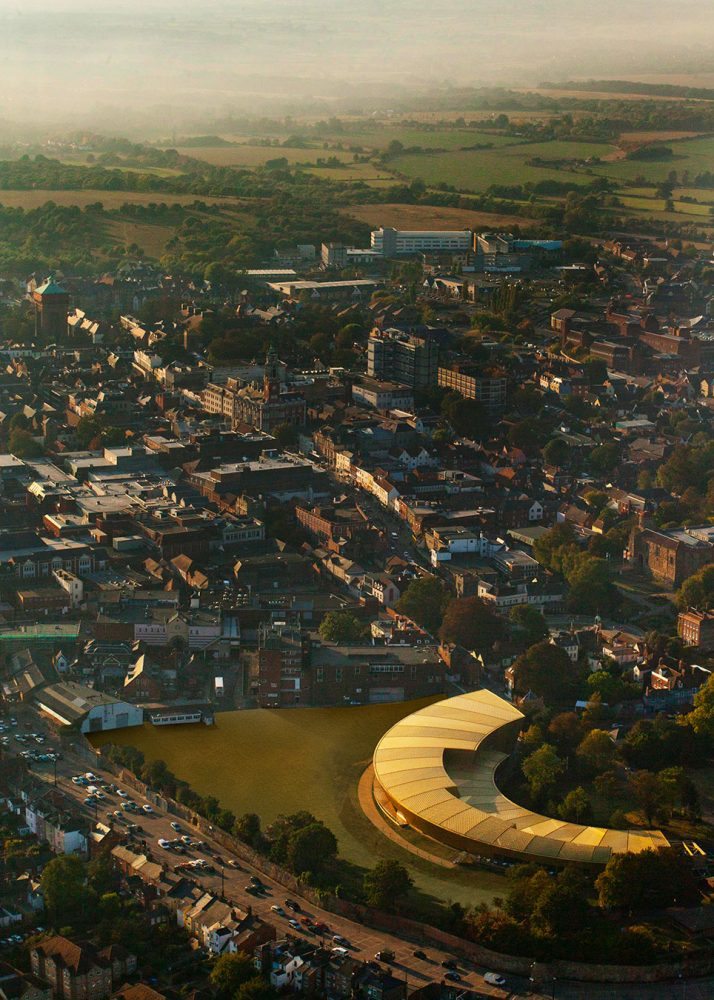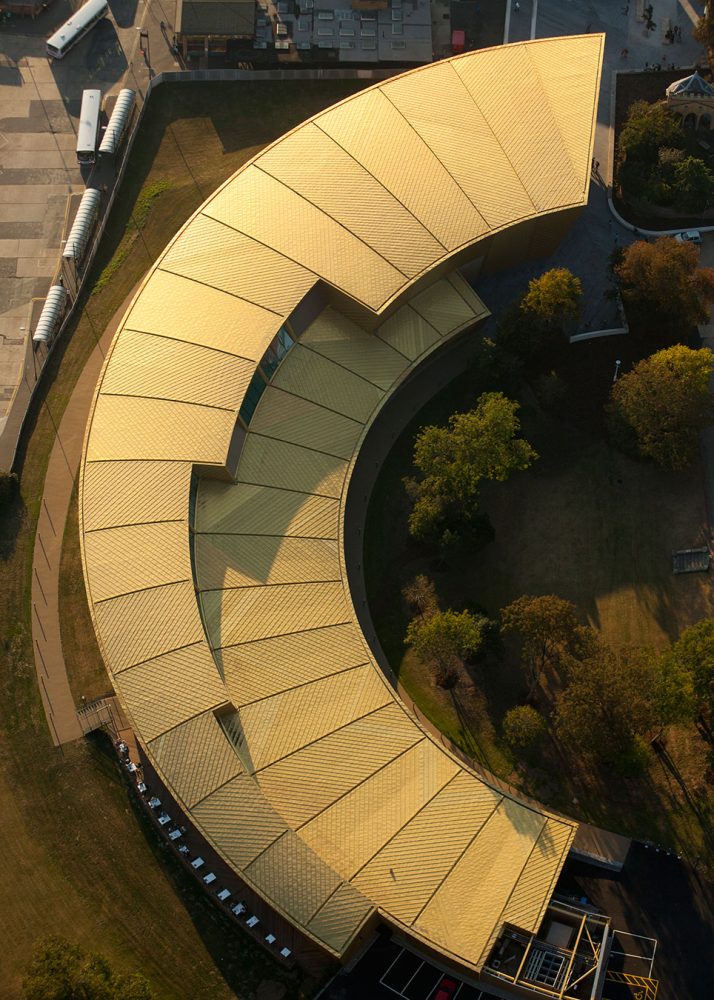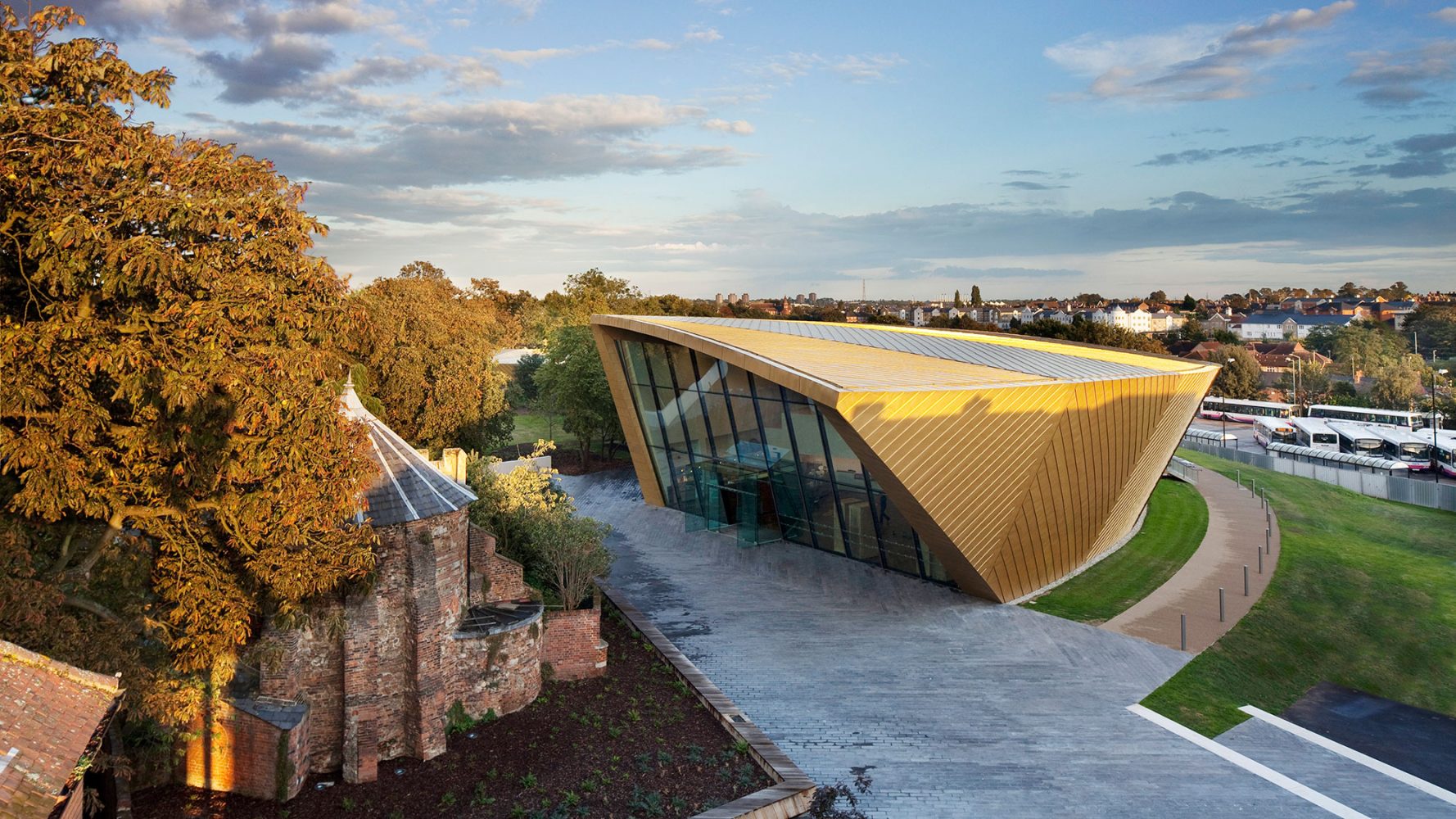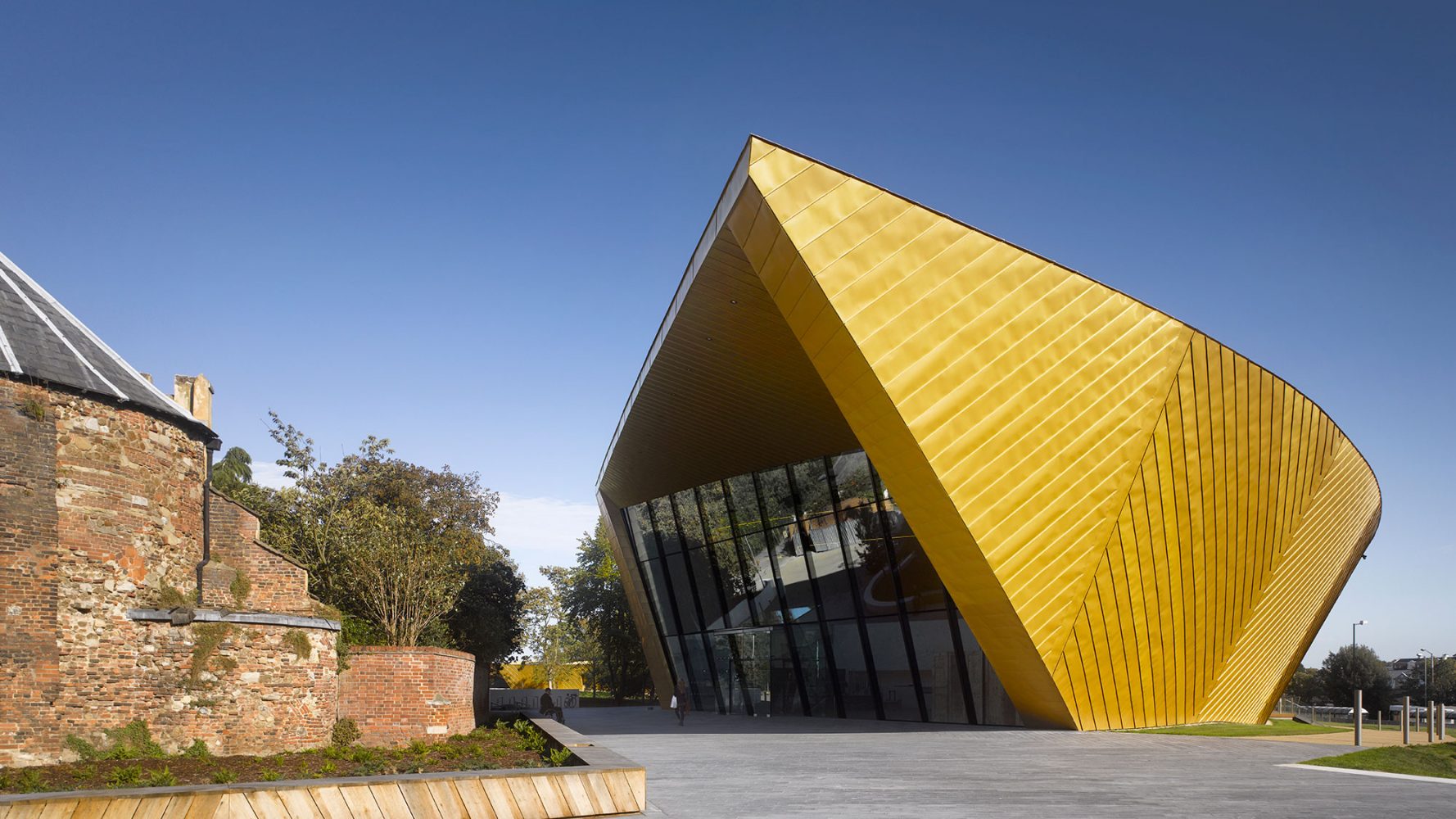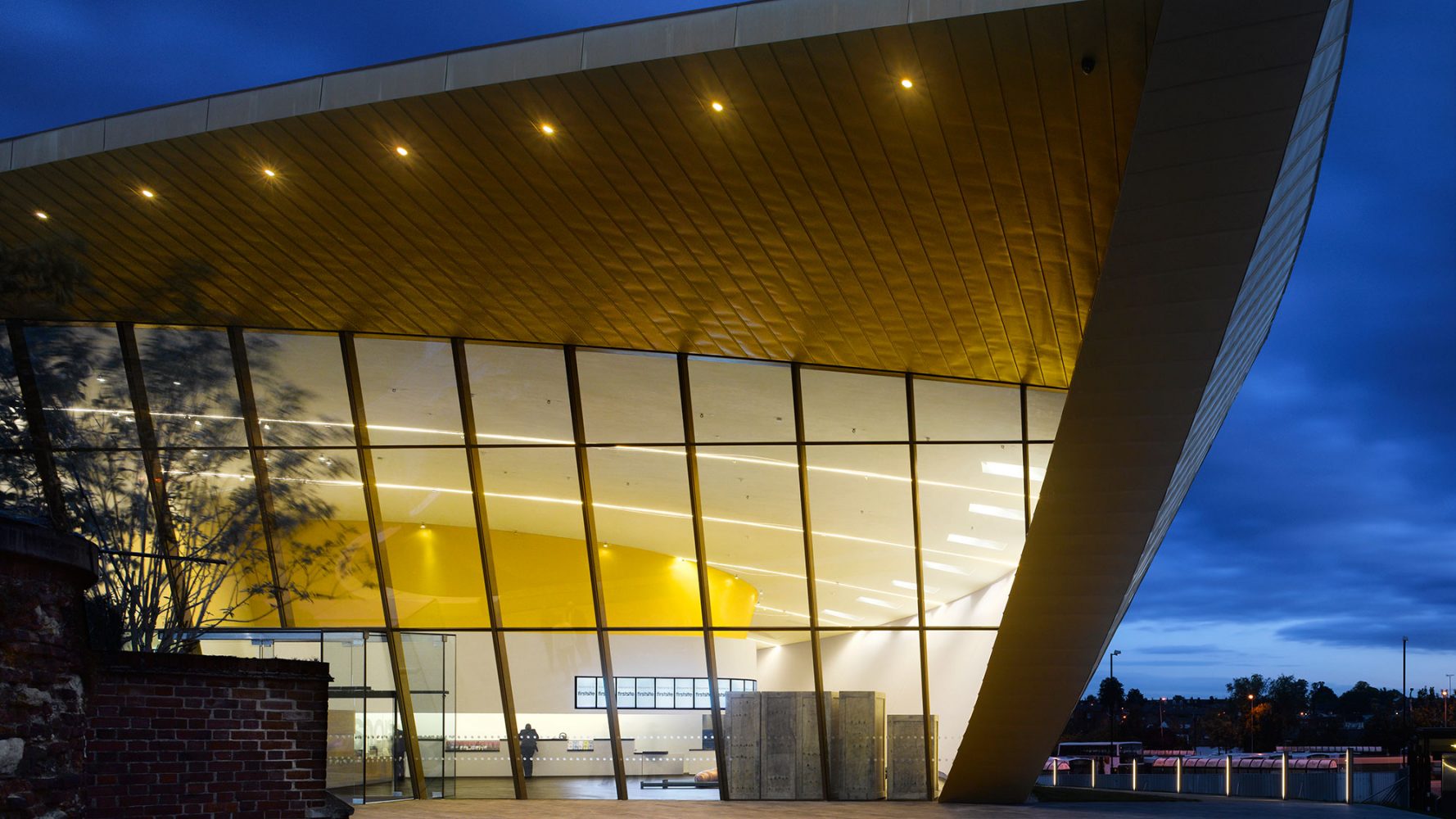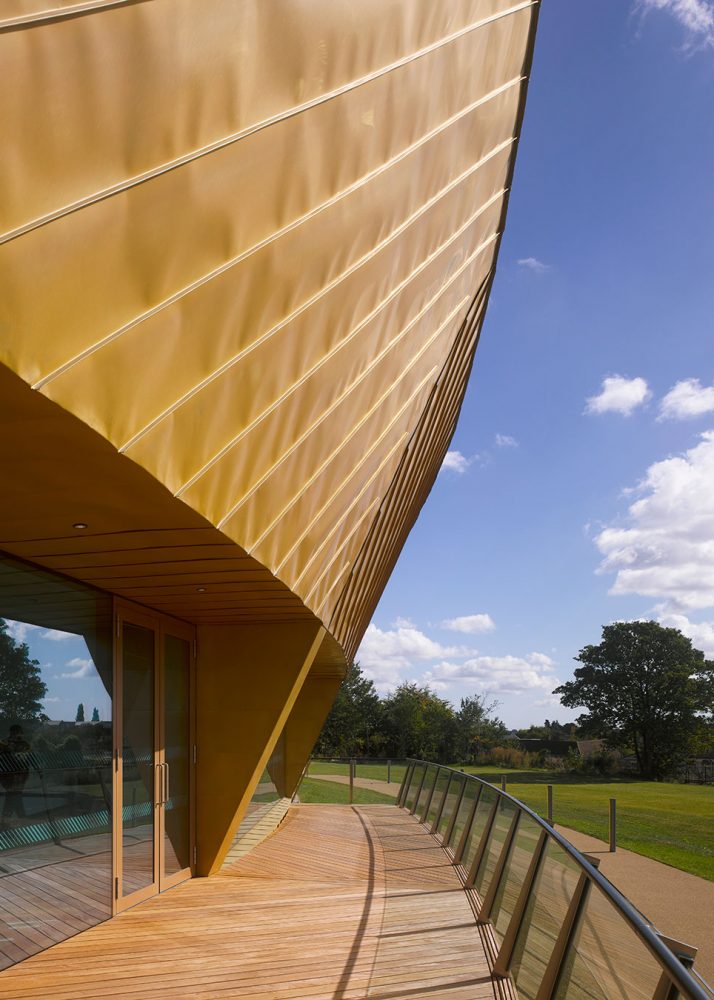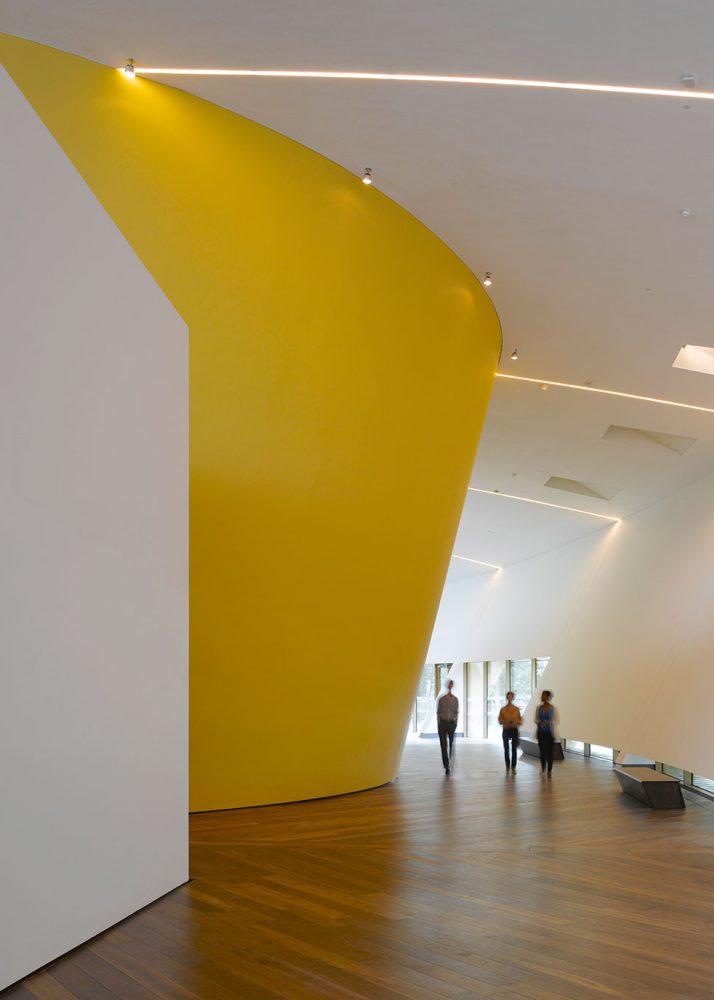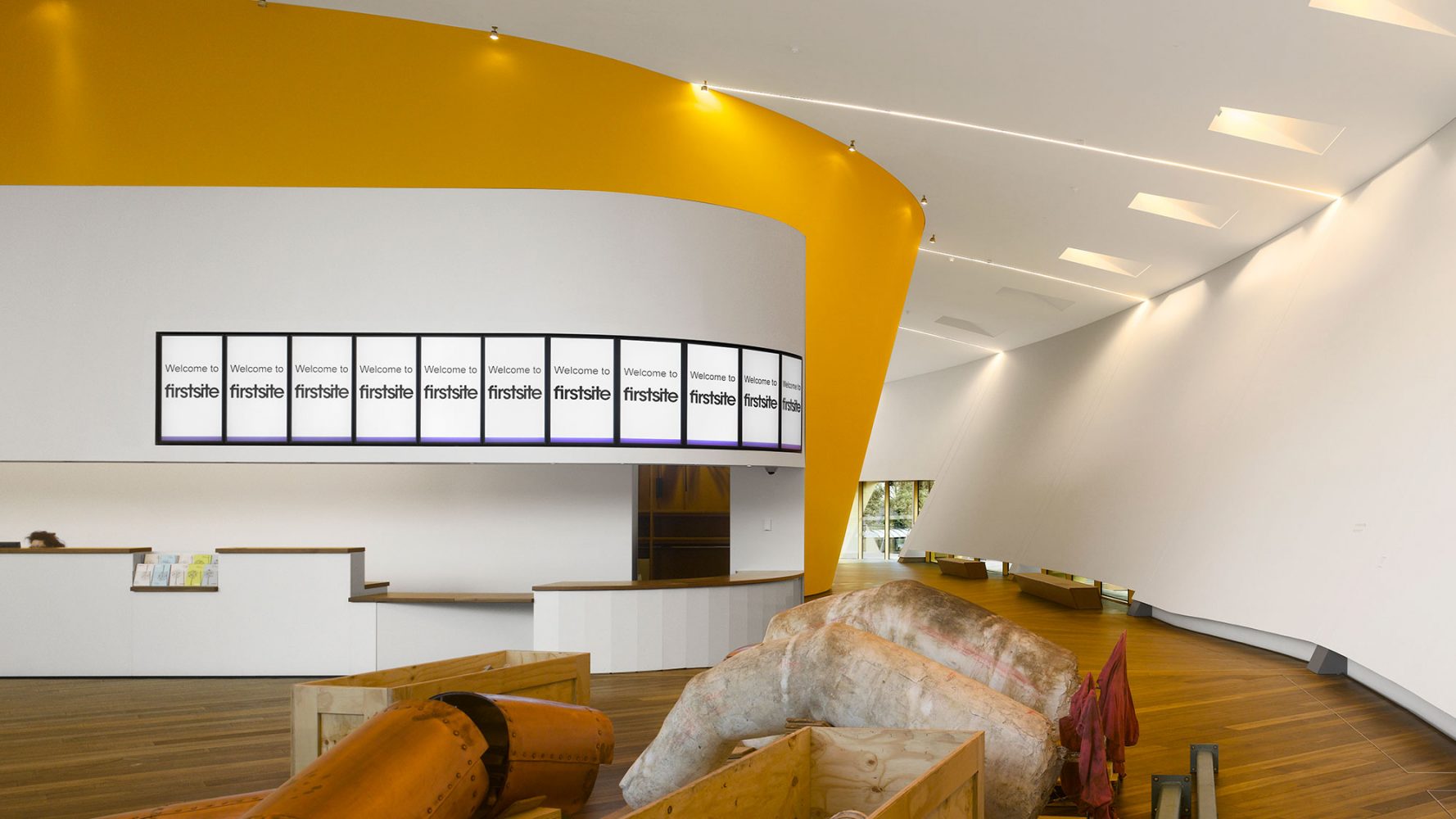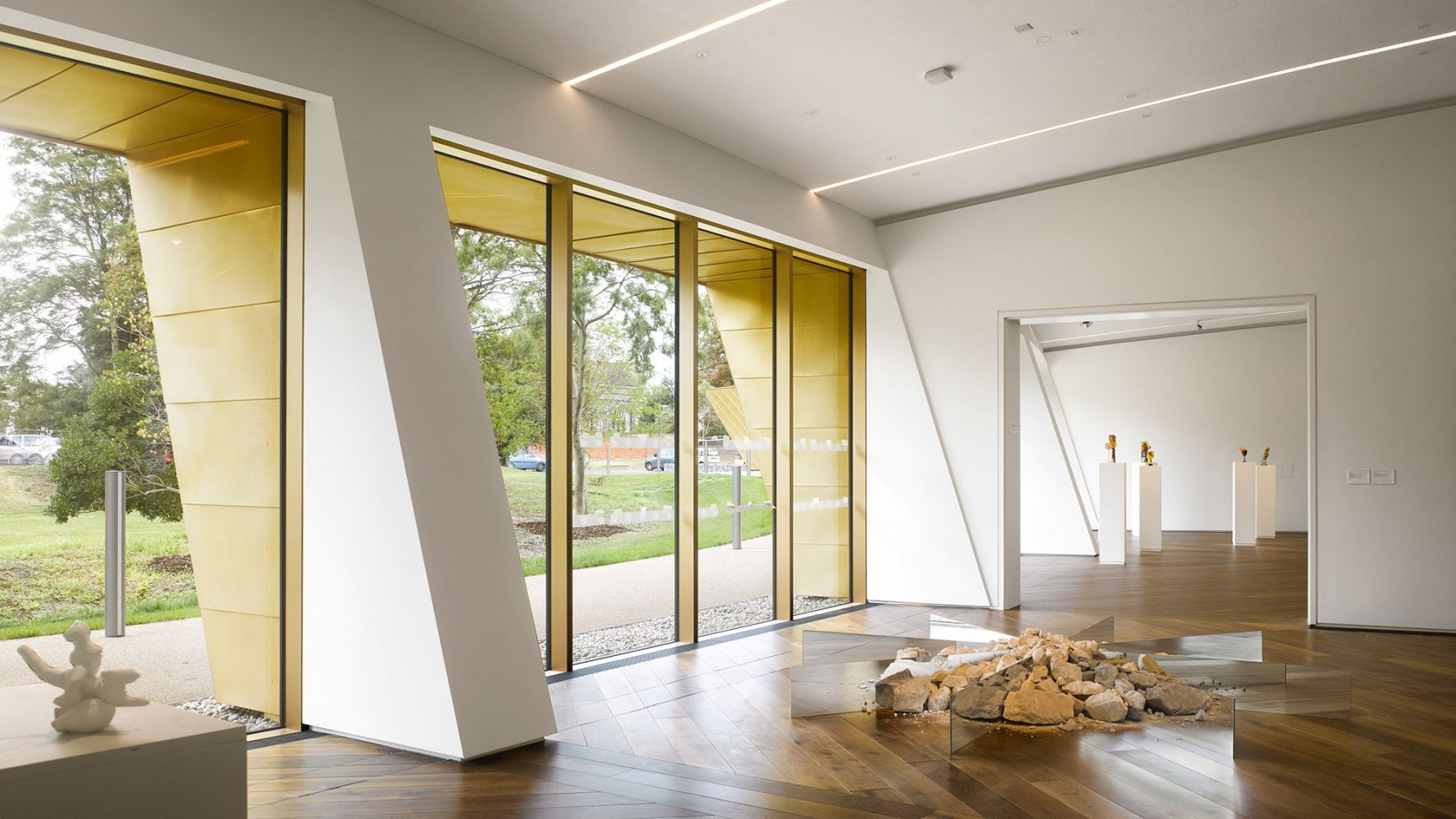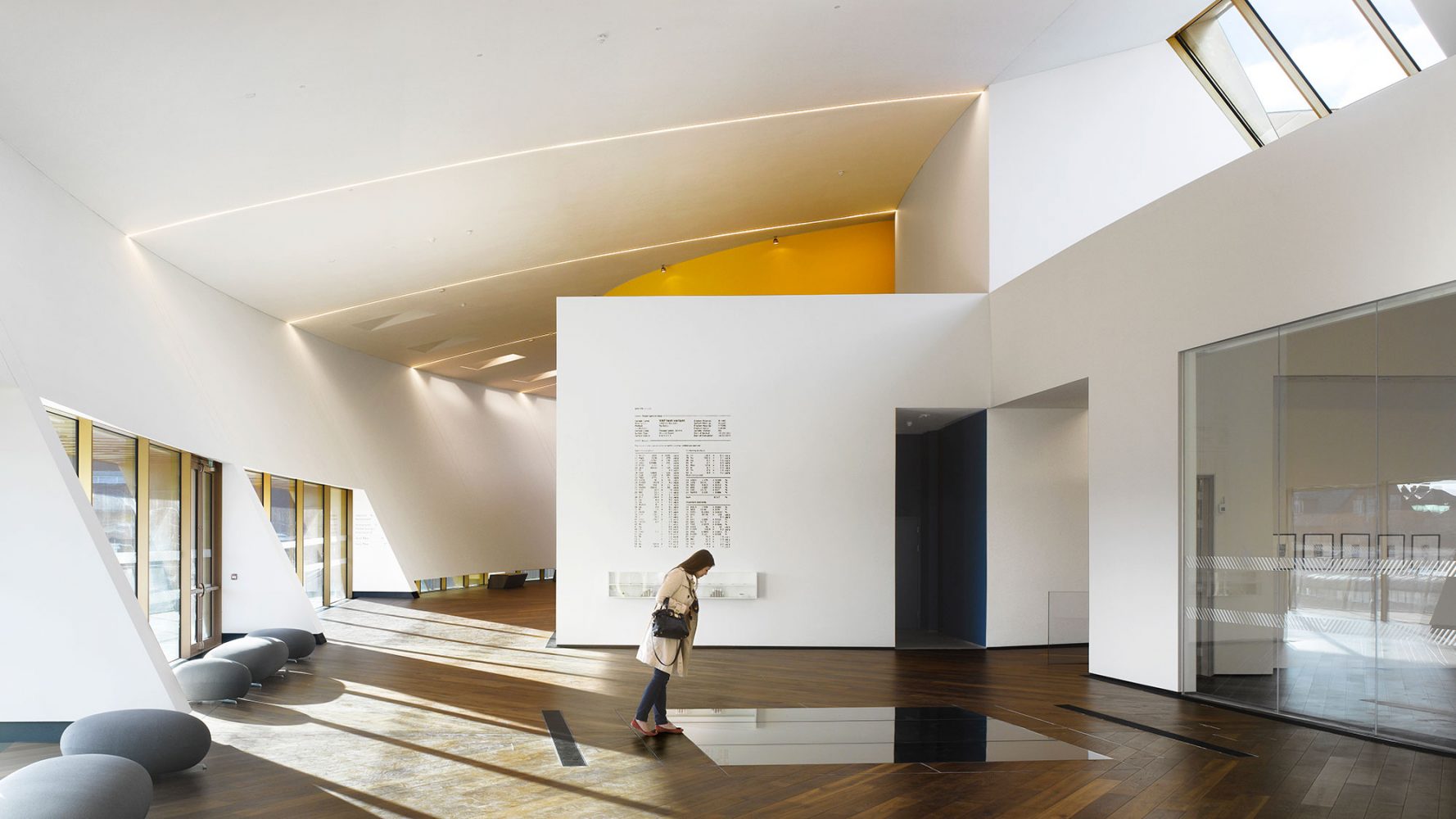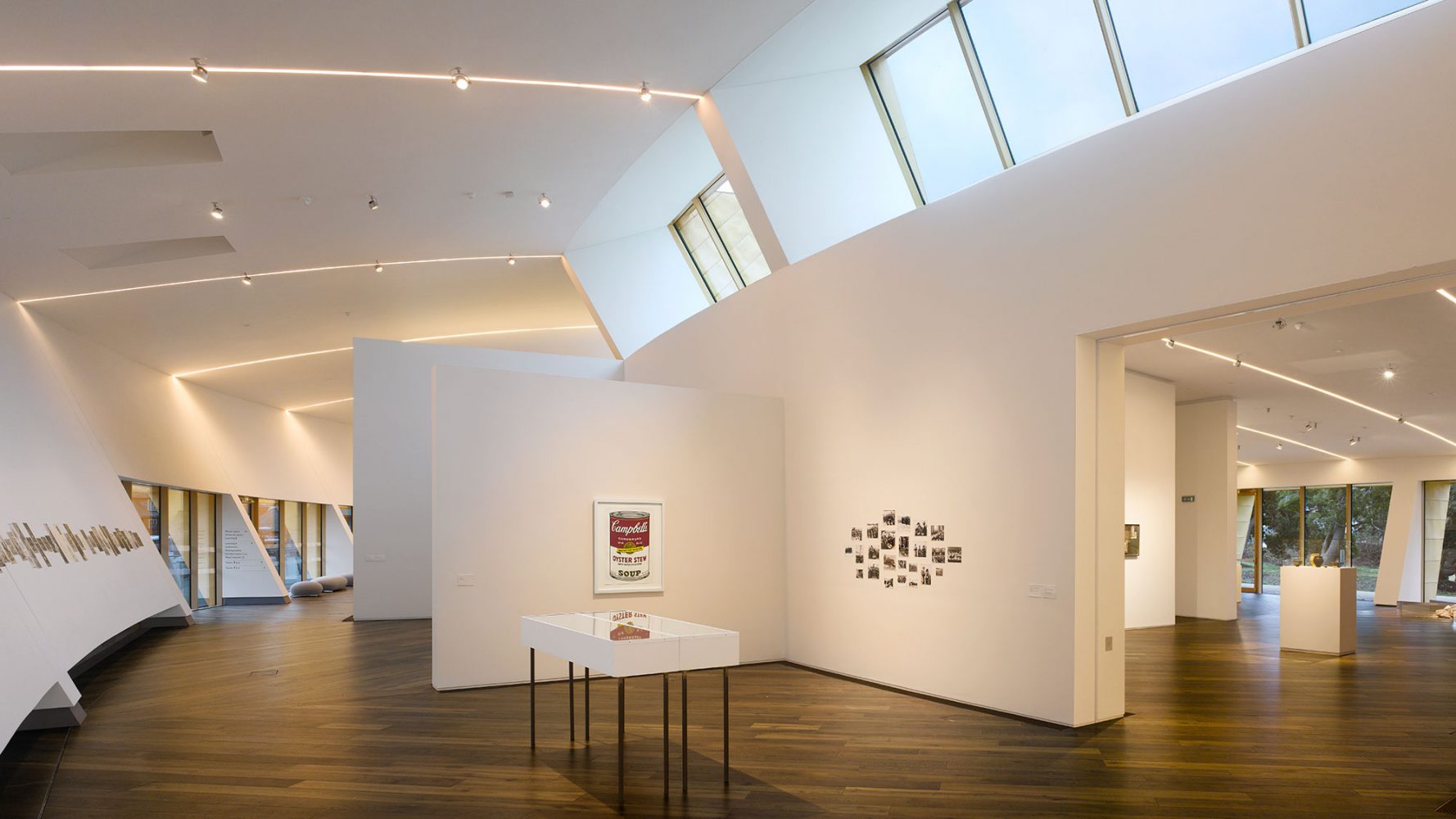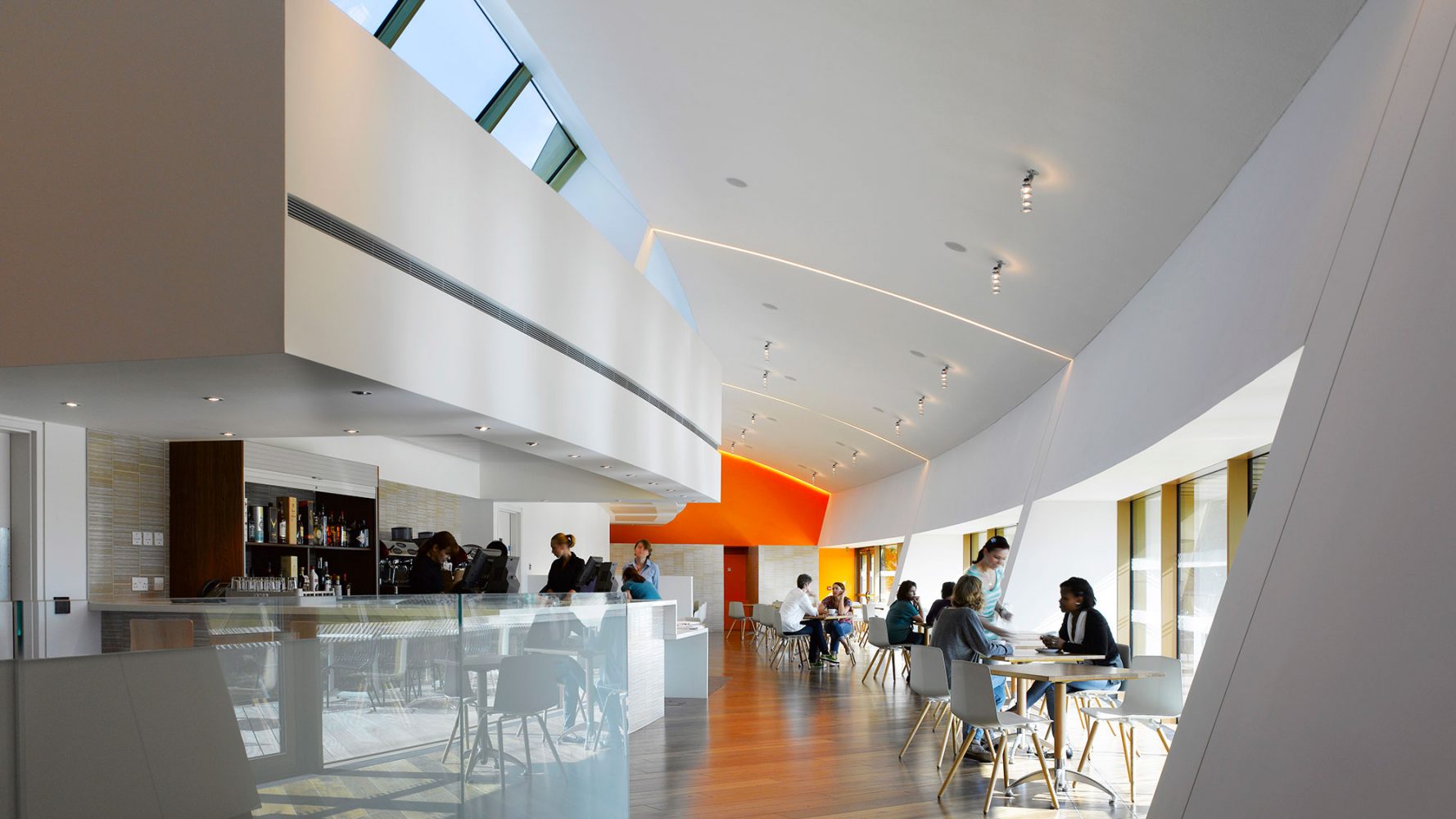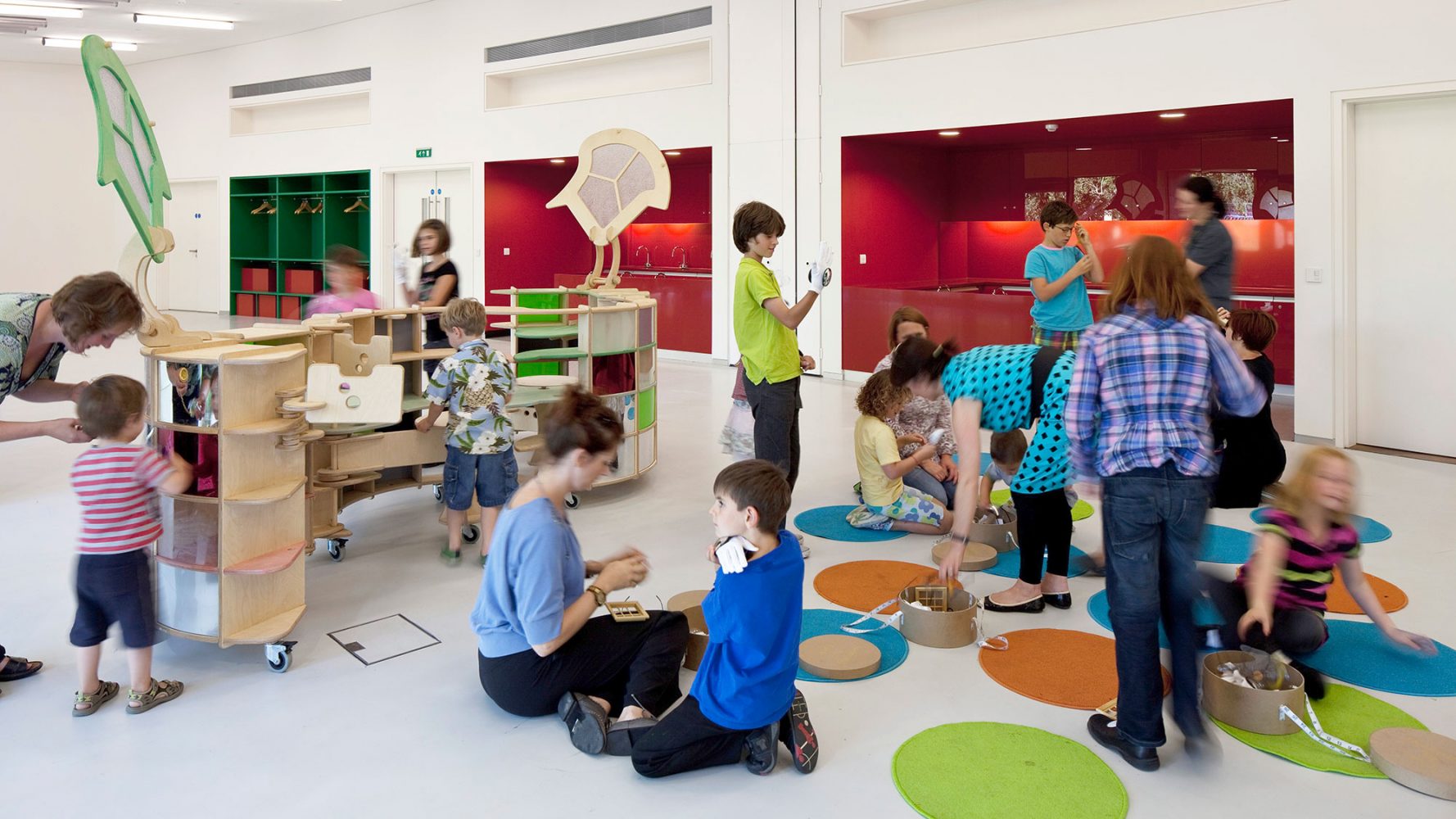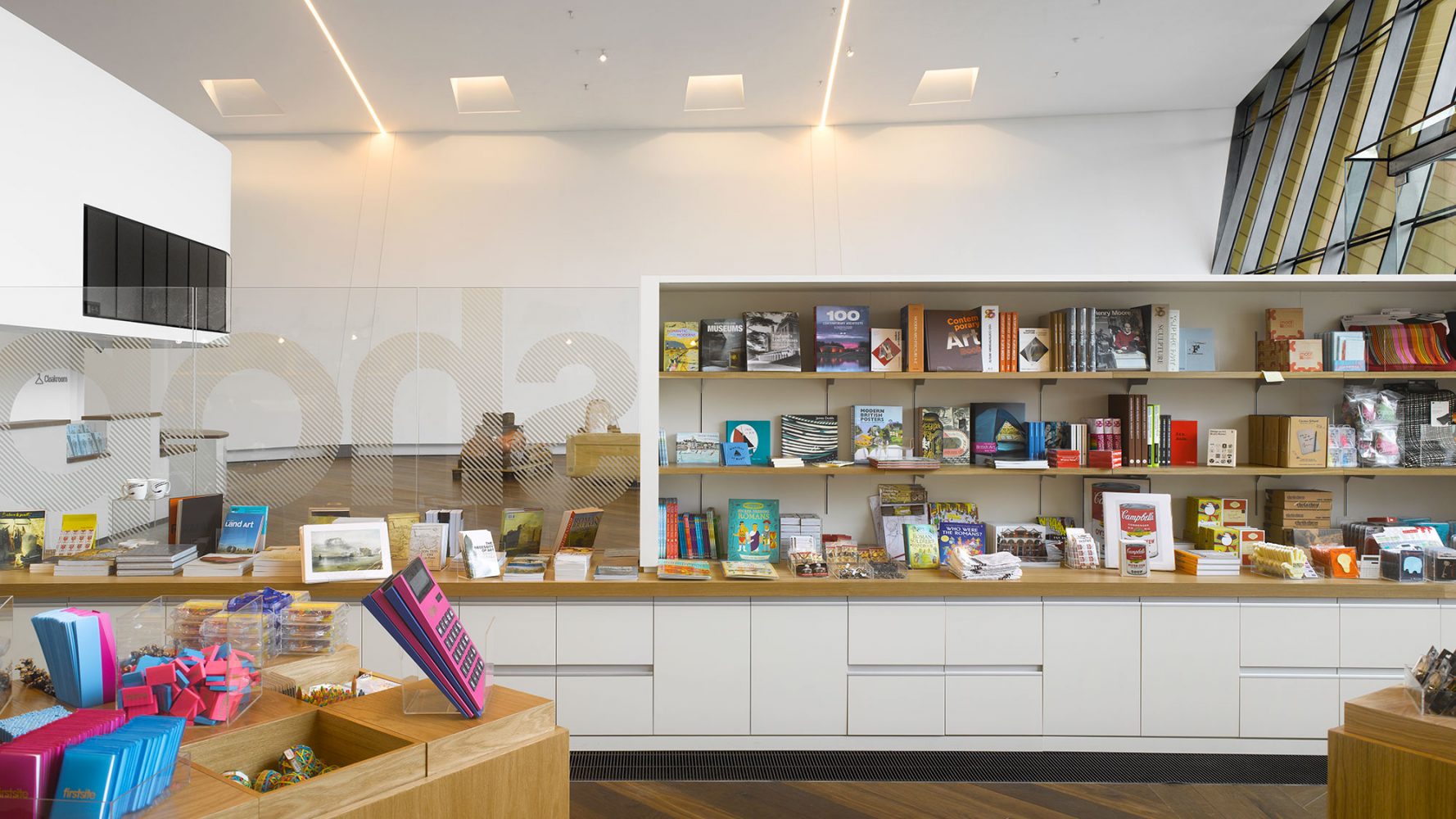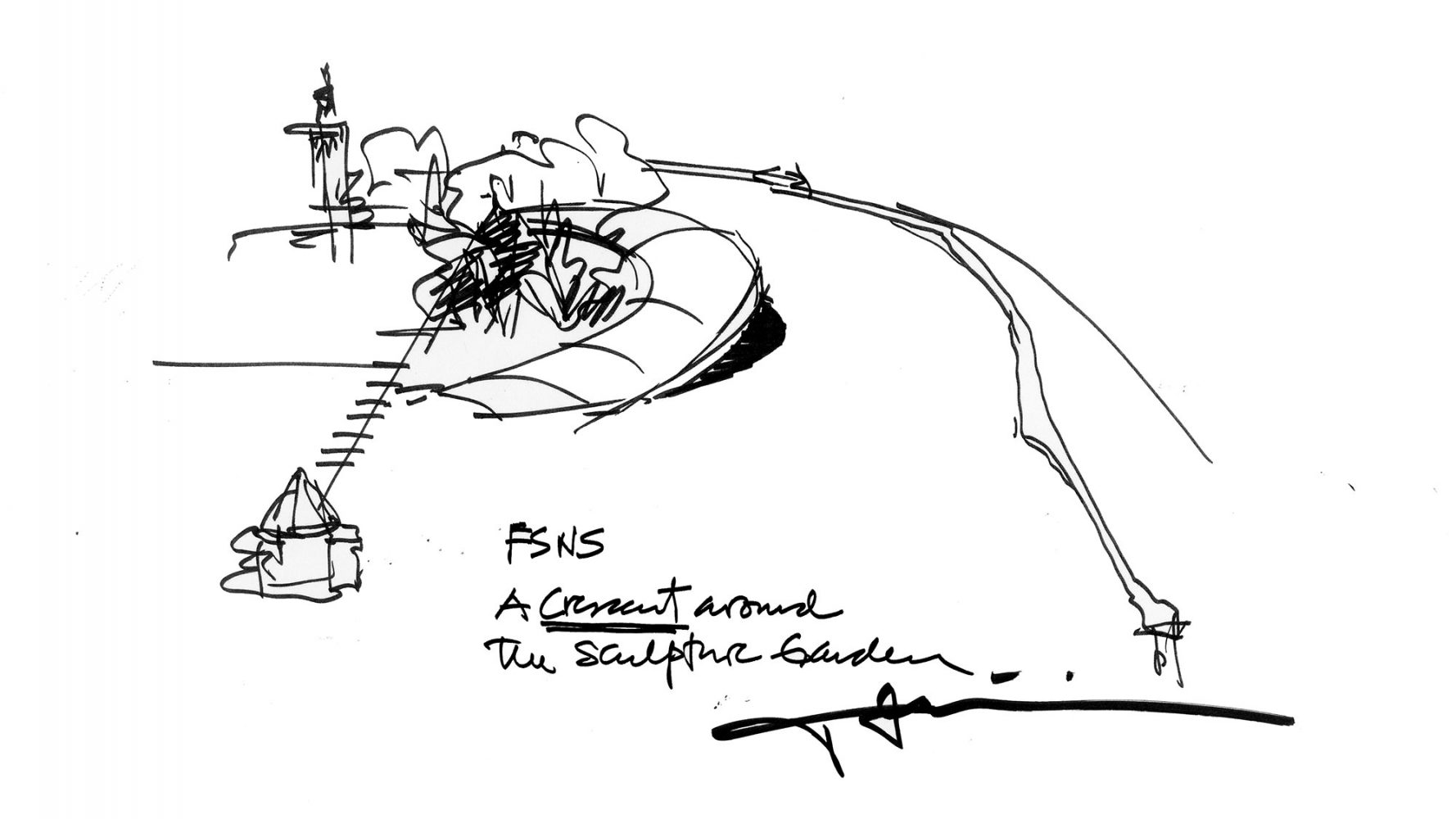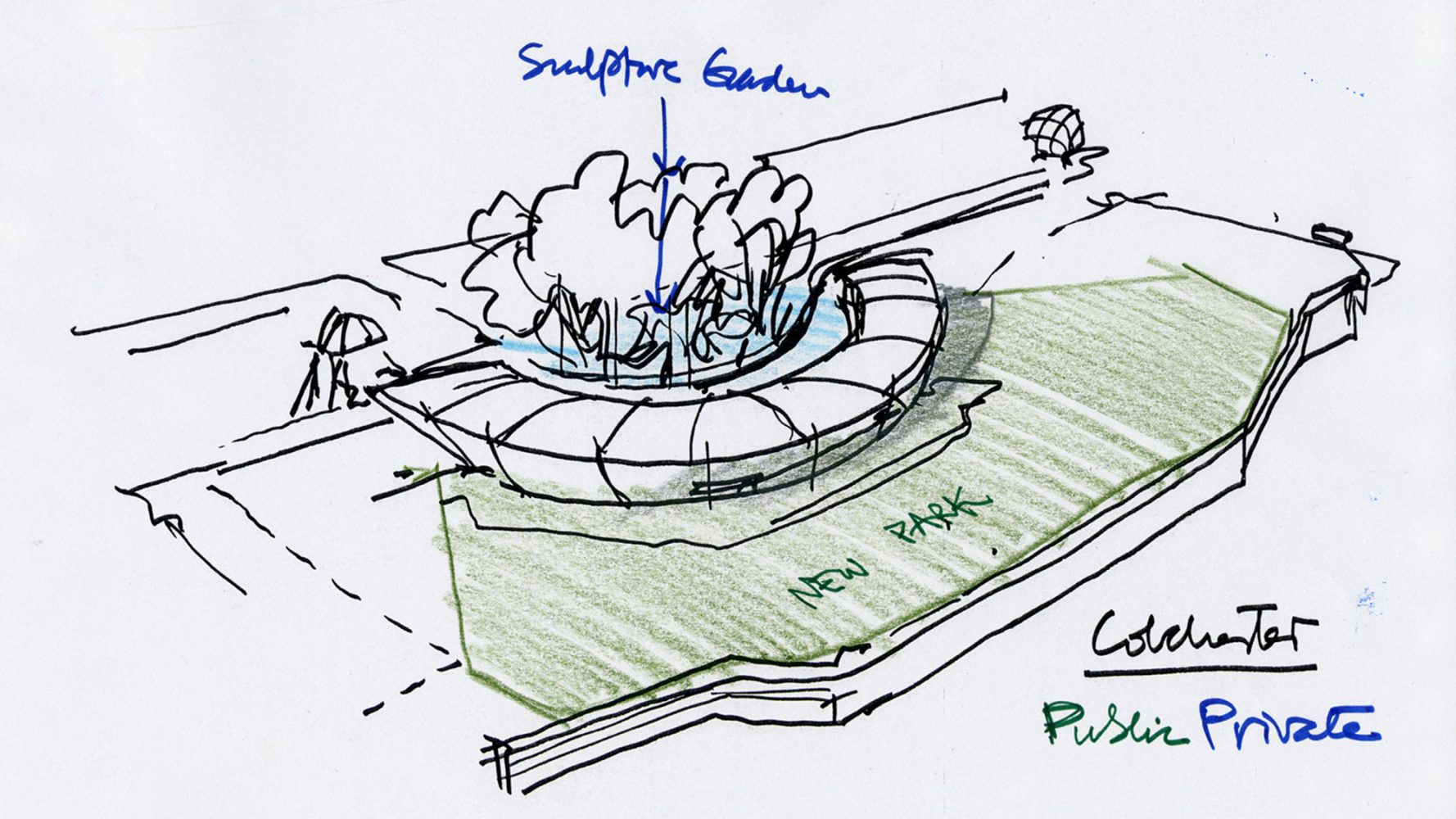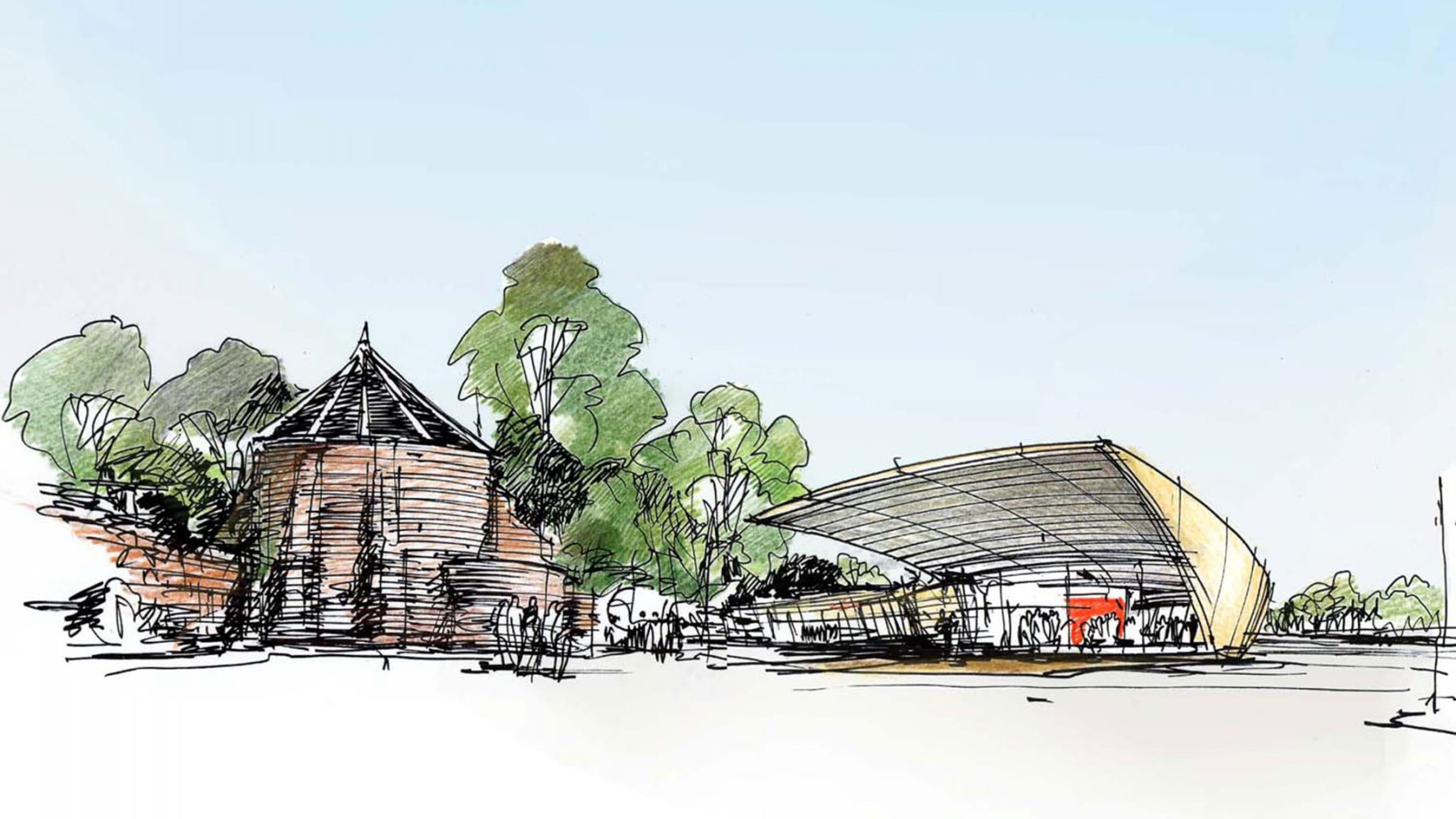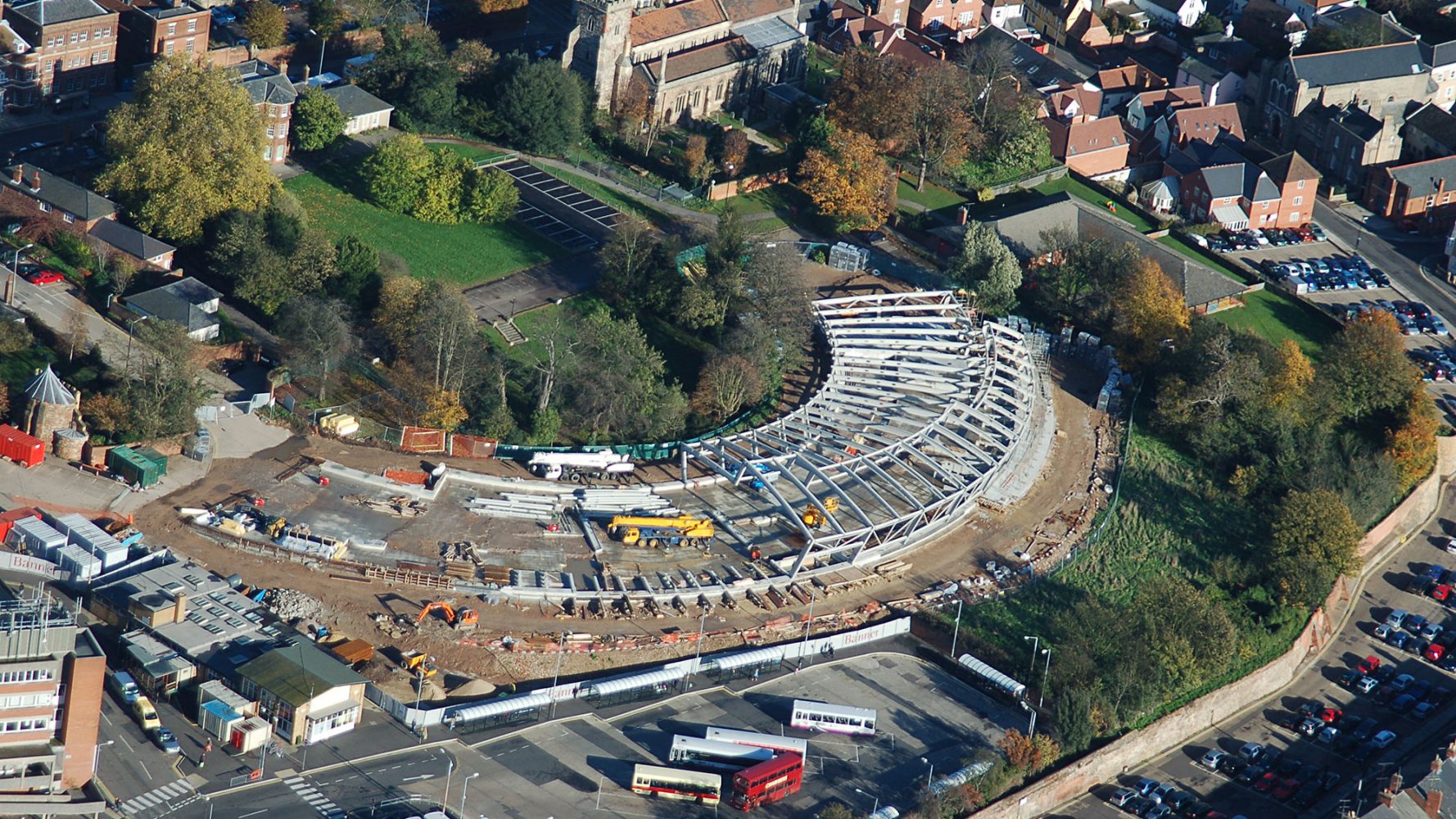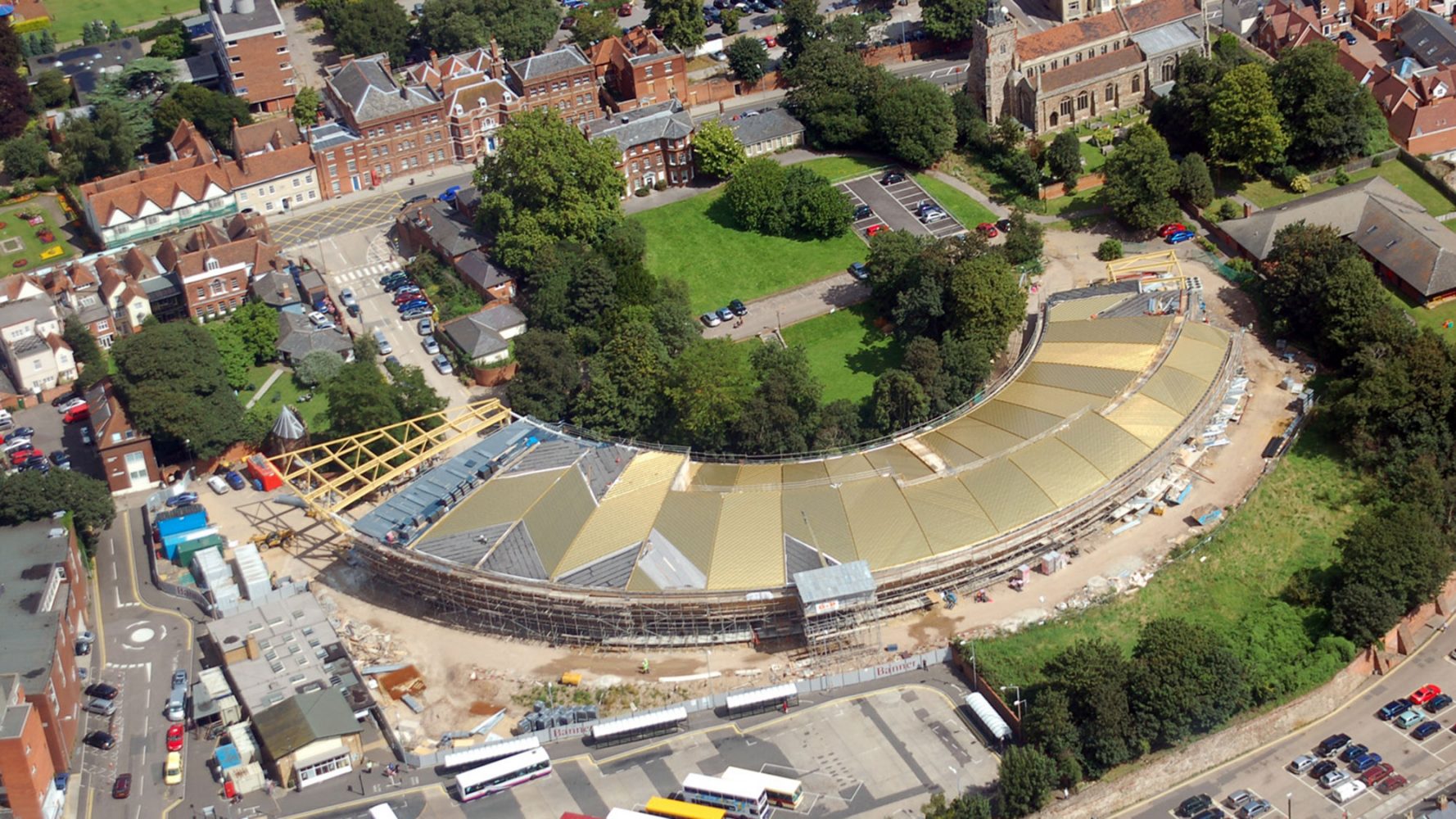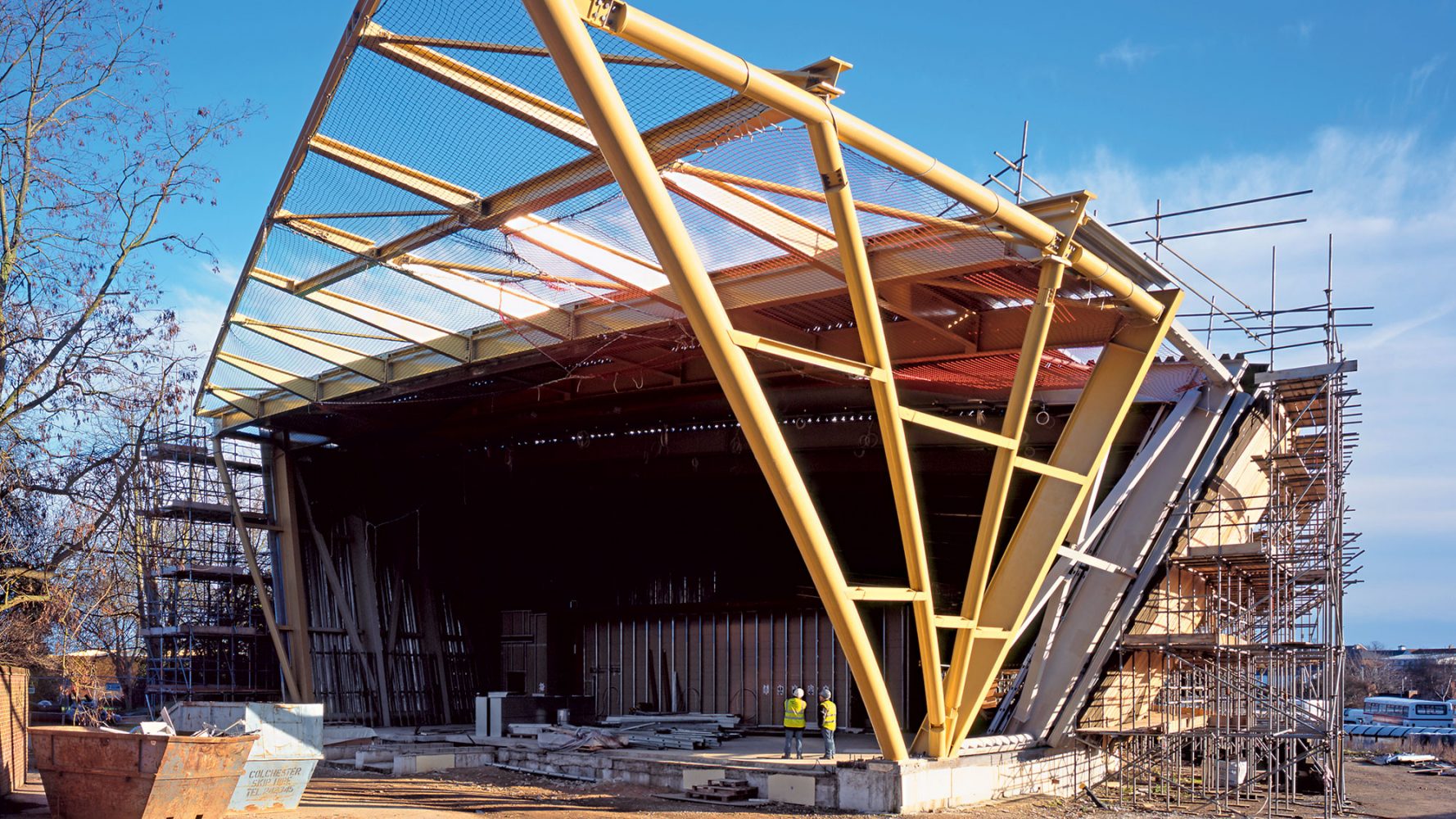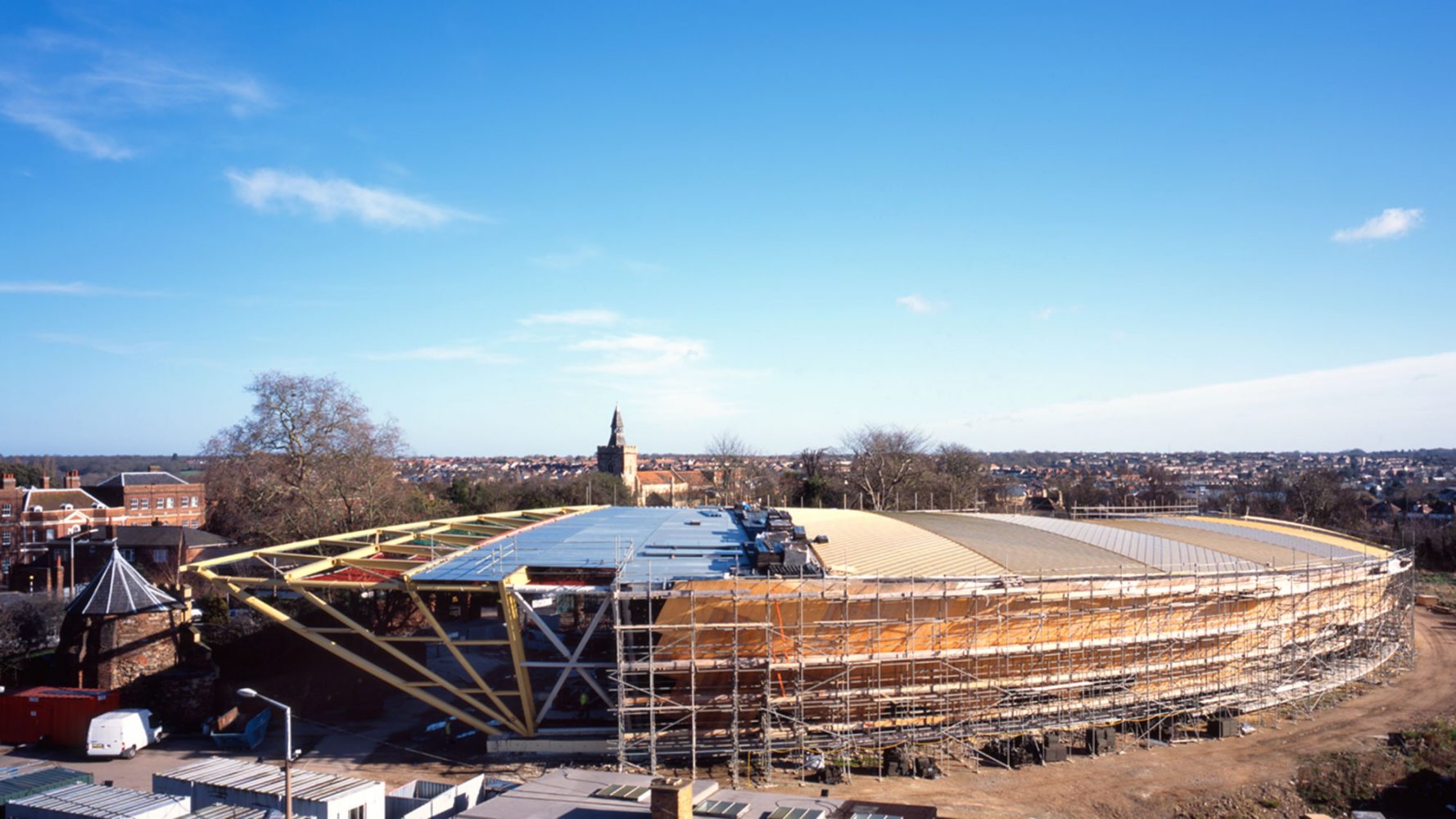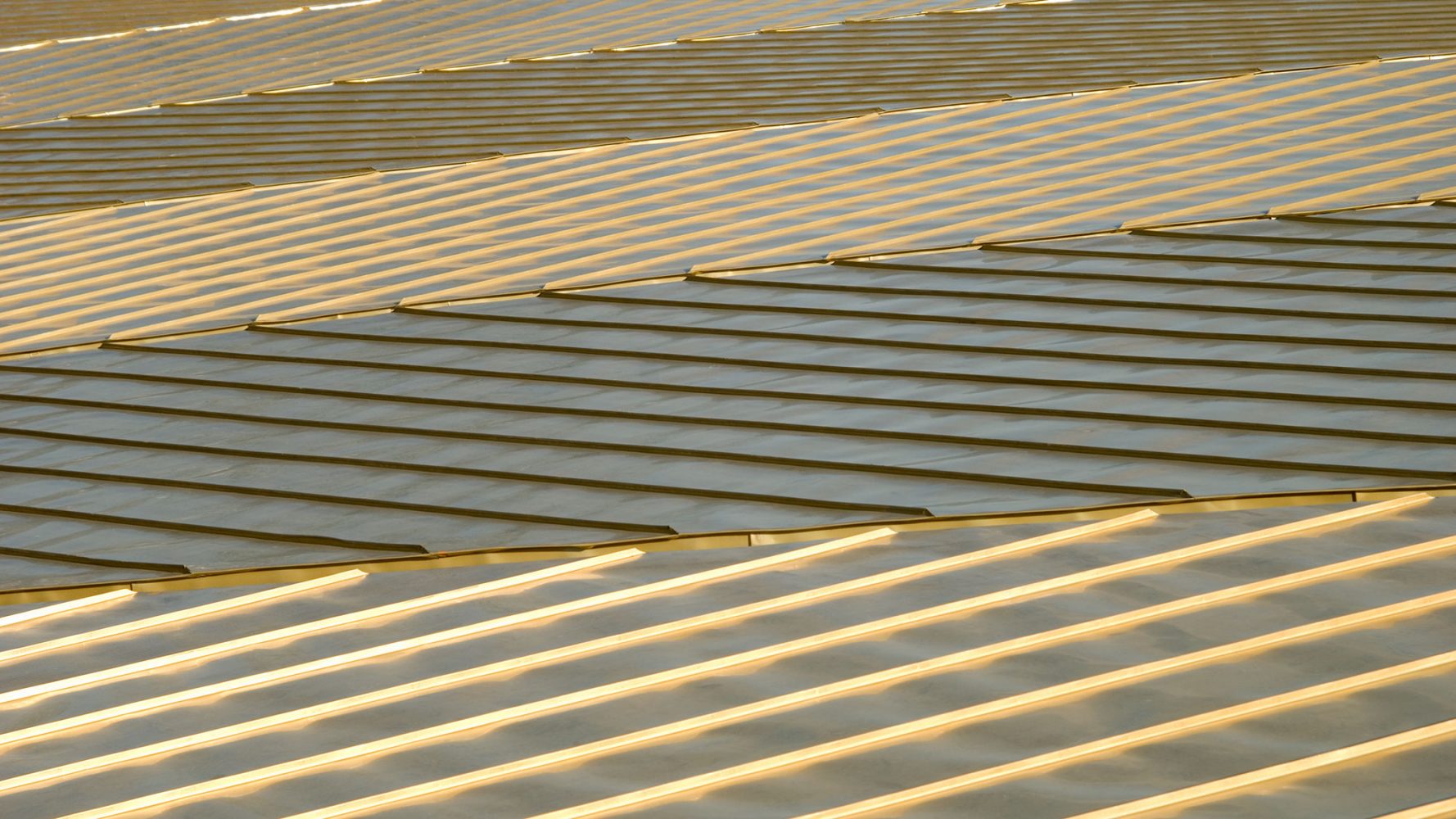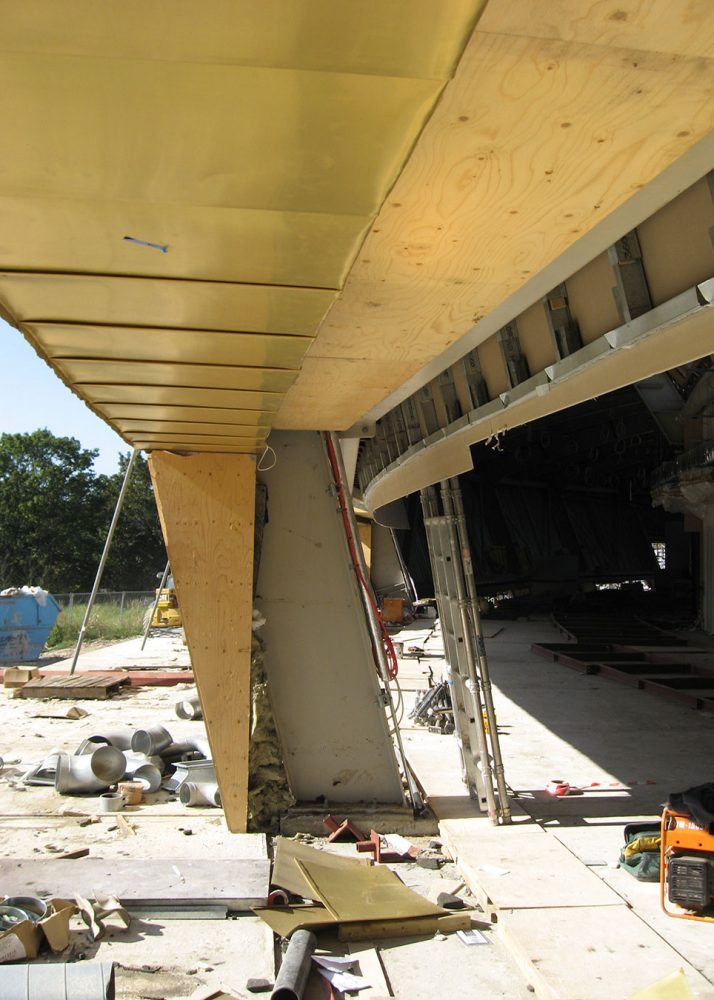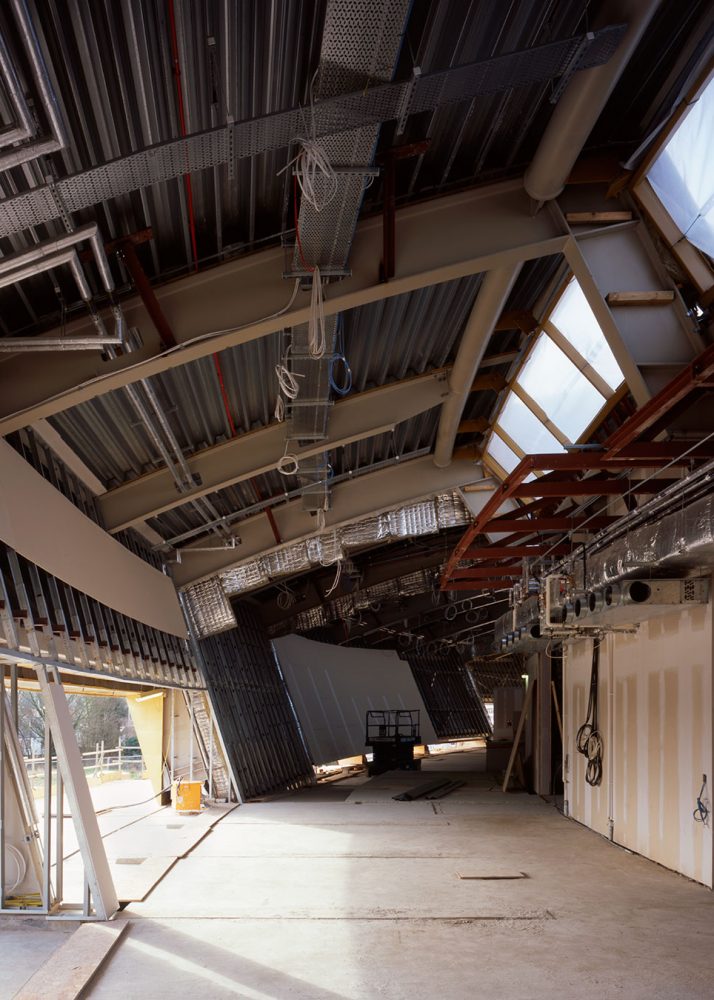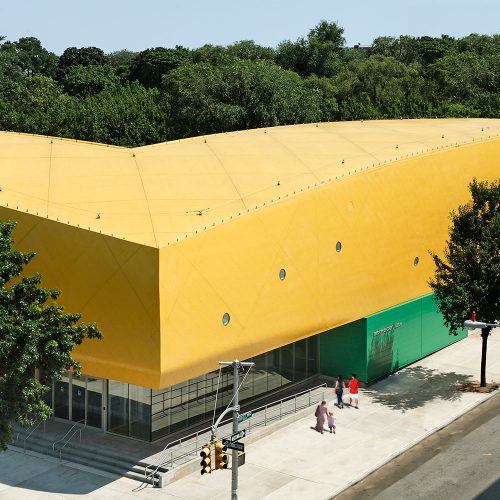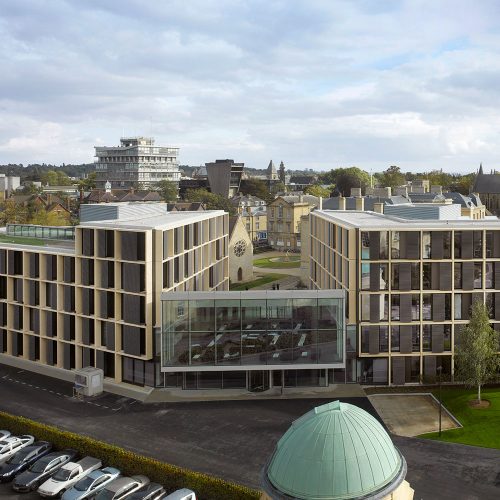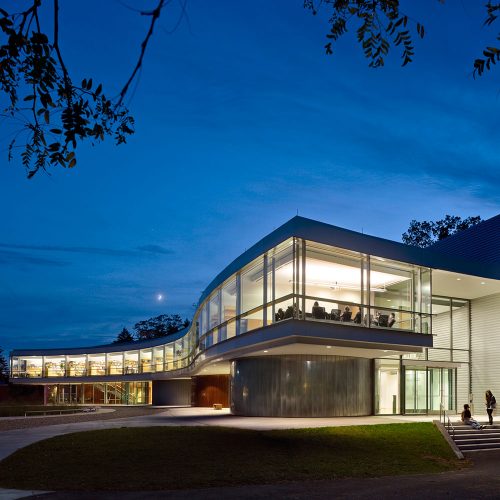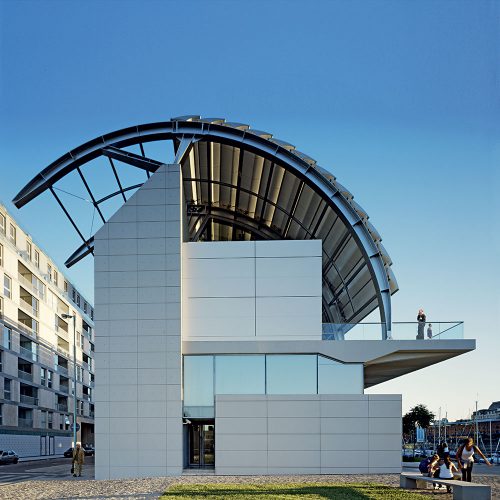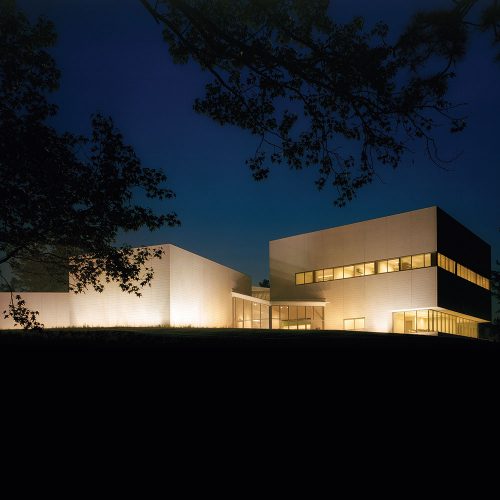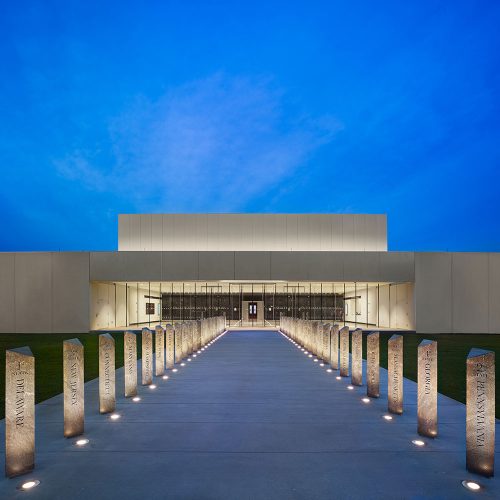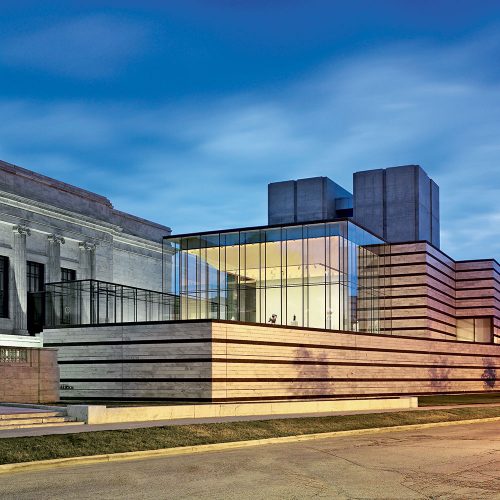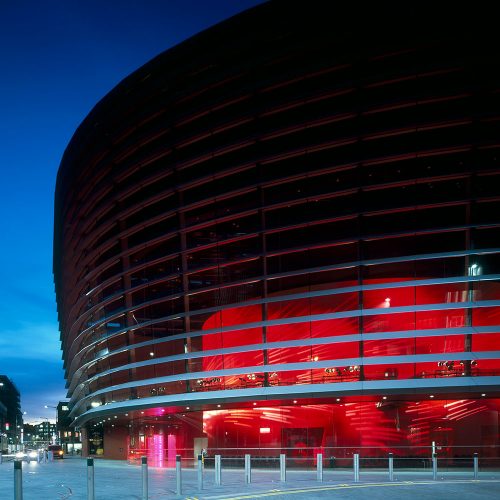firstsite:newsite, Visual Arts Facility
A bold, bright crescent-shaped building rises from an innovative, shallow foundation system that protects the early Roman ruins over which it is built and anchors the revitalization of one of Colchester’s most historic districts.
As the first effort in the revitalization of Colchester’s historic St. Botolph’s Quarter, firstsite:newsite anchors the long-term development plan of an under-utilized district. Rafael Viñoly Architects’ design for this new visual arts facility expands on the project brief, which would have destroyed the historic character of St. Anne’s Street by introducing an institutional scale within the small grain of a historic community strip. Once the construction site was moved eastward at the center of the block, the crescent-shaped museum could sit within new parkland while simultaneously maintaining and showcasing local heritage sites, including early Roman ruins. The museum’s bold and bright form is intended to draw visitors to participate in the art facility programs.
To the north, the building wraps around an eighteenth-century Victorian garden. The roof, which slopes slightly upward in line with the site topography, culminates in a monumental portico that frames the lobby with full-height glazing. To the south, the outside arc of the crescent faces a small Victorian garden and an intact Roman wall that defines the site boundary. Contemporary in both form and cladding (the exterior consists of a distinctive gold-hued skin of copper-and-aluminum alloy panels), the building adopts the site’s axial geometry and the approximate height of the neighboring buildings. A concrete raft foundation allows the structure to rest on the ground and leave buried archaeological remains undisturbed, with no deep excavation required.
firstsite, a prominent contemporary arts organization with no permanent collection of its own, hosts artists-in-residence and traveling exhibitions; the latter are displayed in the galleries near the center of the building and throughout the main circulation space. This zone runs along the crescent’s outer arc and slopes gently to draw visitors through the exhibition spaces, presenting outdoor views where possible to render the arts complex open and accessible. Where art is displayed and sunlight must be controlled, floor-level window strips provide diffused natural light while revealing the movement of people inside to visitors in the outdoor gardens.
Other program spaces include a gift shop, an auditorium for film screenings and presentations, classrooms and education facilities, administrative offices, and a restaurant with an outdoor terrace for additional seating in good weather.


